
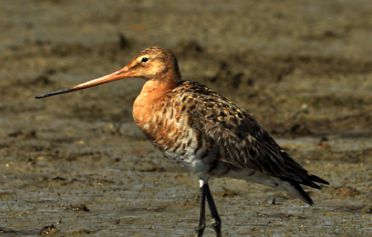
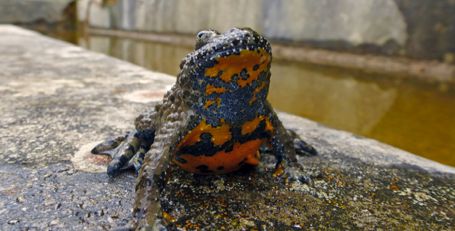
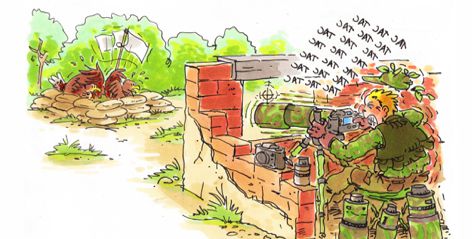
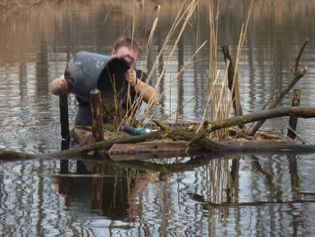
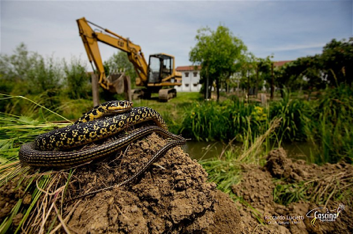
CONSERVATION PROJECT
SKUA Nature is a private company with unique characteristics. The team is made of highly motivated naturalists, who strongly believe that the projects carried on by SKUA can give important contributions to nature conservancy, through concrete actions and by raising money for local research studies and actions.
In all the reserves we develop, we activate actions dedicated to nature conservancy and biodiversity studies using funds coming from nature tourism activities and in collaboration with various public or private organizations.

We have proved, in these last few years, that if the work is done fully respecting habitats and species ecology, and adopting dedicated actions to improve feeding, stop over or breeding sites, the results are immediate and positive also for rare or very localised species.
And so our Network’s hides and reserves indeed broadens the range of opportunities and create an ever-growing laboratory on the relation between nature and human activities.

This project is made in collaboration between SKUA and LIPU Bird-Life Italia: 70% of the incomes from the use of photo-hides will be destined to conservation projects inside the partner reserves, as well in close by areas in case of particular conservation priorities. In 2015 the first photo hides of this project have been launched, inside the Ostia Lido CHM Reserve, near Rome.Thanks to a very high number of photographers, we have been able to get funds to use for protecting various Montagu’s Harrier nests in the countryside to the northwest of Rome.With a solid group of volunteers, the involvment of the land owners, and the purchase of electrified fences against terrestrial predators, we are sure that the future of this small population will be brighter.

Some of Our Projects
Montagu's Harrier Nests
Thanks to the contribution of Terna SPA and Schwegler / Natur Protection we have installed tens of bat-boxes in the reserves of Palude di San Genuario and Fontana Gigante, as well as on many high voltage pylons in the middle of rice fields: our goal is to increase the breeding and wintering sites for bats in an area hevaily compromised by intensive agriculture. A research on this topic has started, in order to survey the area and assess the result of this project.
New Colonies for Bats
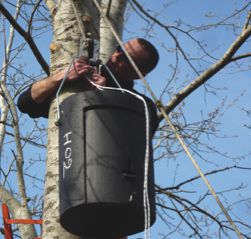

The only Black tailed Godwit population breeding in Italy is in the rice fields of the Vercelli province. Since 2014 we have started to support conservation interventions for this species: sadly every year several nests are destroyed, due to agricultural works.Thanks to the use of wooden templates and the rental of some land portions, we have started to have the first results, but starting from autumn 2015, in the Cascina Spinola estate, we will begin to restore habitats, including wetlands and permanent meadows, on a 15 hectares area, that we hope will be the new stronghold for this beautiful species.

Black-tailed Godwits
In the Parco del Po we have been working for three years now, each spring, for restoring, cleaning or creating new earthen walls for Bee eaters.These actions are made inside quarries where gravel is digged for, thanks to special agreements made with the local mining companies and the Park administration: year by year, we locate the more suitable areas for bee eaters , we stop the works in that particular area for the breeding season and we optimize the area for their needs.The number of breeding pairs is constantly increasing, without causing any trouble to the mining activity: and this proves once again how the relation between man and nature can be sustainable.
Eastern Walls for Bee-eaters

In the Wild Lucania reserve, in collaboration with the Center for Naturalistic Studies Nyctalus Onlus, various small drinking troughs for wildlife have been created, in an area where there were no more water reserves left, due to the general abandonment of the countryside.Various old wells have been recovered and are operating again, so that wildlife can use them safely, as these sites are protected and monitored. In one of these sites two very important southern Italy endemic species are now breeding:Appennine yellow-belliedToad and Italian Newt.

Breeding Sites for Amphibians
Helping nature conservation means also following some good practices and habits when exploring and living the natural environment. Because of that, in addition to concrete actions to increase and conserve biodiversity, we do also invest time and resources to costantly improve our working system and most of all to help our clients to reach the best ethical standards. Our dispositions are very serious and include some fundamental rules that we do use and apply in every situation where we work.
Good Practices

